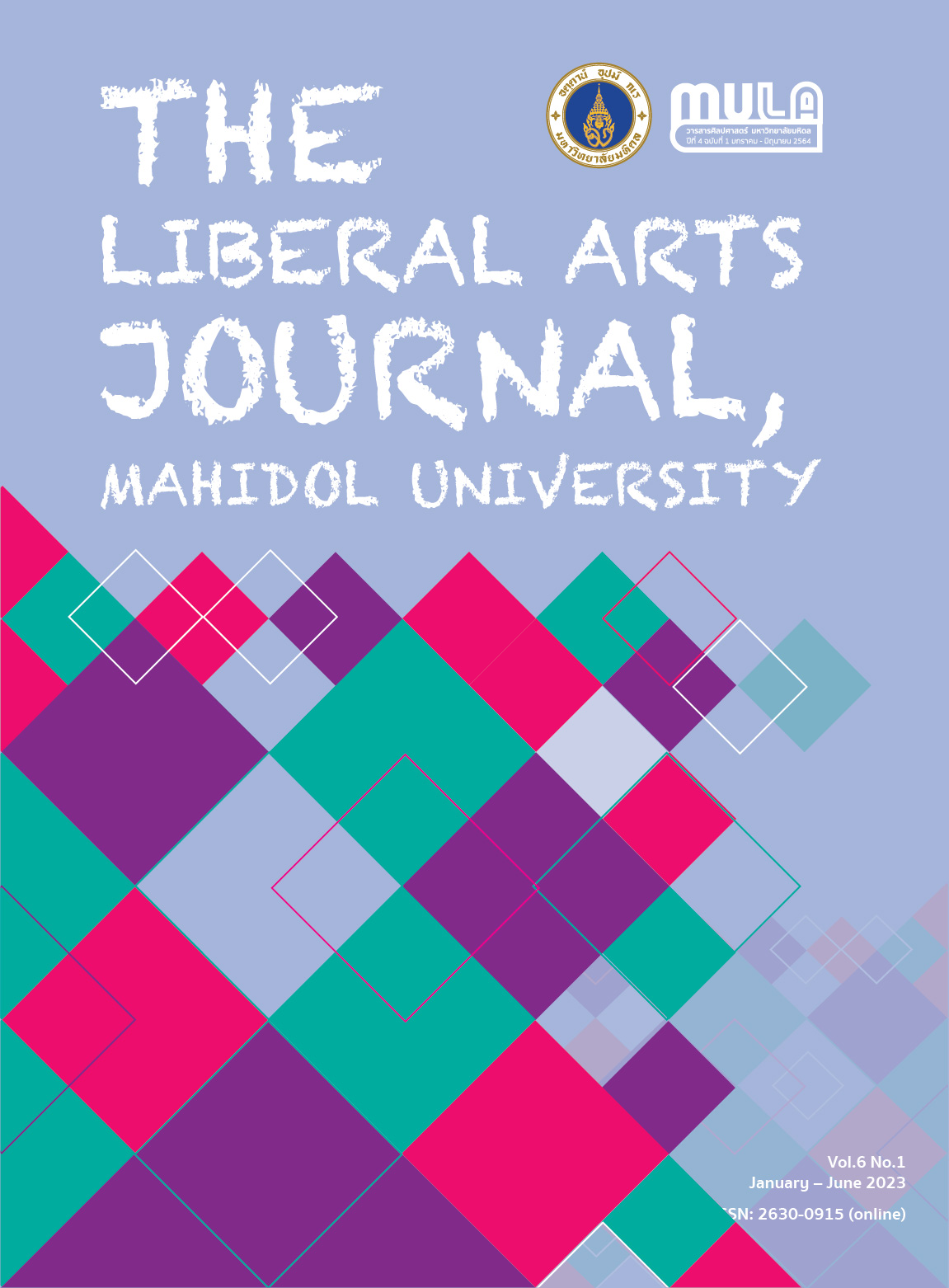Khoːwìd Kathǎ: Language Strategies for Persuasion in the Discourse of Buddhist Sermons on the Situation of the Communicable Coronavirus Disease 2019 (COVID-19)
Keywords:
language strategies, persuasion, sermons, COVID-19Abstract
This research article aims to investigate persuasive language strategies in the discourse of Buddhist sermons on the situation of the communicable Coronavirus Disease 2019 (COVID-19) by using the concept of persuasion, "Khoːwìd Kathǎ, a collection of sermons during the situation of COVID-19" by Phra Brahma Pandit (Prayoon Dhammacitto), which is a total of 9 chapters.
The results of the research revealed that 7 persuasive language strategies were usesd: the use of pronouns, using analogy, using rational sentence structures, using modality, using interrogative sentences, using references, and using intertextuality. The aforementioned language strategies likely persuade the people who listen to the preaching to apply Dharma in their lives, in order to be aware of the care, treatment, and protection of themselves from the Coronavirus Disease 2019 (COVID-19) and to be able to see ways to live and adapt in order to live in today's society. This will probably lead to solutions to problems faced during the situation with the communicable Coronavirus Disease 2019 (COVID-19).
References
Charmonman, S. (2008). Internet: the Colonizer. Bangkok: Than Books.
Deelert, D. (2014). The Research Study of Mind Persuasive Techniques in Lecture of Phra Phrommanggalājāraya
(Ven. Paññānanda Bhikkhu). Journal of Interdisciplinary Research: Graduate Studies, 3(1), 89-107.
Department of Mental Health. (2020). Knowledge of Mental Health Care in the Situation of the Covid-19 Outbreak. Nonthaburi: Ministry of Public Health.
Dhammacitto, P. (2021). khoːwìd Kathǎ Buddhist Sermons on the Stuation of Covid. Bangkok: Amarin Printing and Publishing.
Eakapont, T., Wongpinunwatana, W., & Plangchroensri, P. (2020). Novel Coronavirus 2019 is Enemy: A Study of Conceptual Metaphors of Thai People According to The Cognitive Linguistics. Journal of Language Religion and Culture, 9(1), 1-37.
Government Gazette. (2022). Cancle the Emergency Situation Declaration in all Areas throughout the Kingdom. Bangkok: Ministry of Interior.
Jirapanakorn, N. (2020). Conceptual Metaphor and Reframing COVID-19: Pictorial Analysis in Social Media. The 14th Thai Humanities Research Forum National Academic Conference “iHumanities: Technology Health and Life”. Nakhonpathom: Mahidol University.
Kladyu, C. et al. (1974). Use of Language. Bangkok: Kledthai.
Longacre, R. E. (1983). Grammar of Discourse. New York: Plenum Press.
Pantumeta, N. (2006). In Semesta. Bangkok: Chulalongkorn University.
Pattamaroj, Y. (2022). Metaphors about the COVID-19 Pandemic in Thai Political News on the www.thairath.co.th Website. Vannavidas, 22(1), 134-175.
Phithakwong, K. (2017). Spoken Discourse of Marganɑ̄yaka at Royal Temples in Nakhonpathom Province: Communicative Components and Persuasive Linguistic Strategies. Master of Arts Thesis. Bangkok: Chulalongkorn University.
Piboonworasak, S. (2004). Components of and Persuasive Devices in Phra Payom Kalayano’s Written Discourse. Master of Arts Thesis. Bangkok: Chulalongkorn University.
Rattanadilok Na Phuket, W. (2021). “We will get through this crisis together”: Persuasion in the Discourse of the News Conferences on the Situation of the Communicable Disease Coronavirus 2019 (COVID-19). Vannavidas, 21(1), 62-104.
Researchers of the Communication for Social Change Project. (2006). Social Concepts and Theories Communication and Social Change. Bangkok: Charansanitwong Printing.
Rungsiri, K., & Damnoen, S. (2022). A Buddhist Teacher and Buddhism Propagation in Thai Society. Journal of Educational Innovation and Research, 4(1), 18-28.
Thiranet, A. (2000). Persuasive Communication Strategies in Lord of Buddha’s Scripture. Master of Arts Thesis. Bangkok: Chulalongkorn University.
Thongthawee P., & Darachai S. (2019). Hortatory Strategies in Buddhist Dharma Books of Phra Maha Sompong Talaputto. Journal of Humanities and Social Science Nakhon Ratchasima Rajabhat University, 1(1), 67-81.
Downloads
Published
How to Cite
Issue
Section
License

This work is licensed under a Creative Commons Attribution-NonCommercial-NoDerivatives 4.0 International License.



